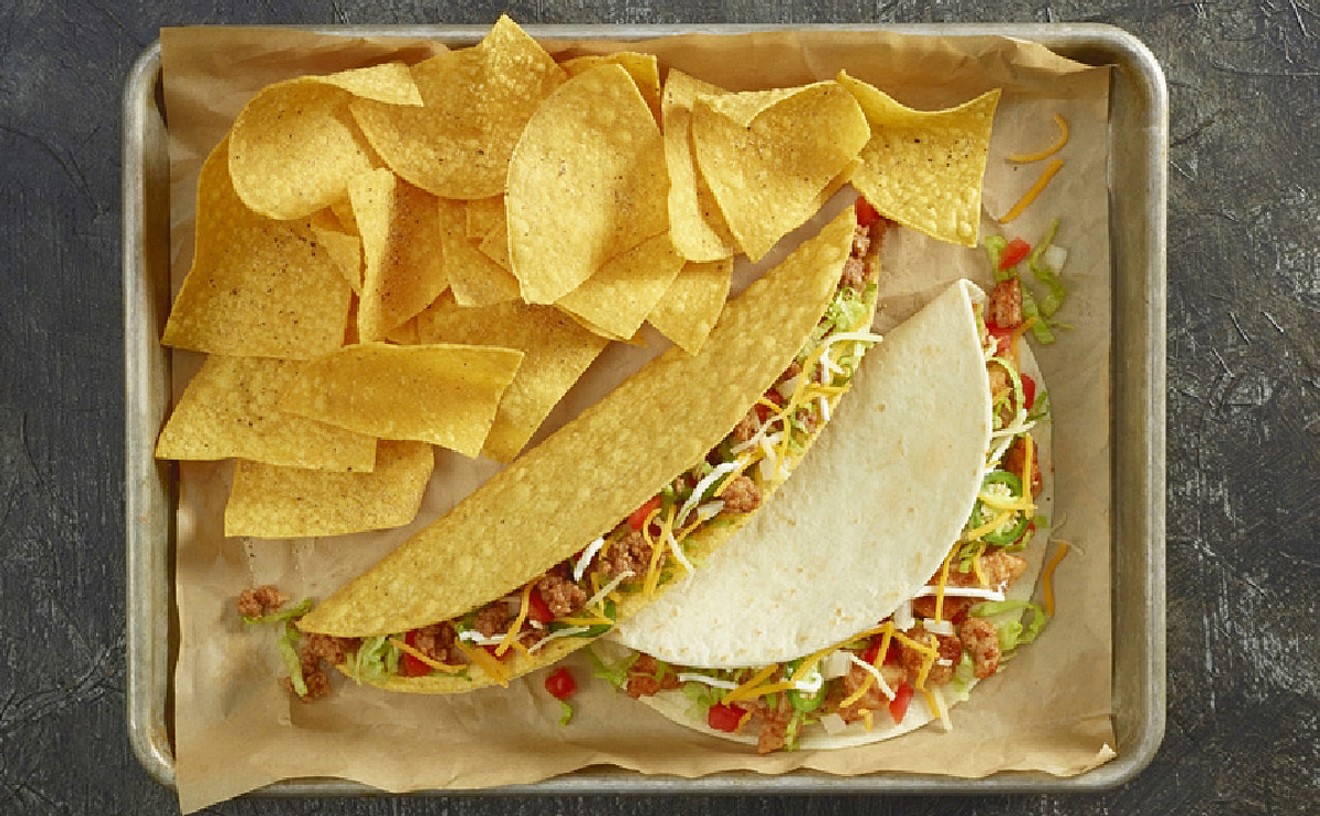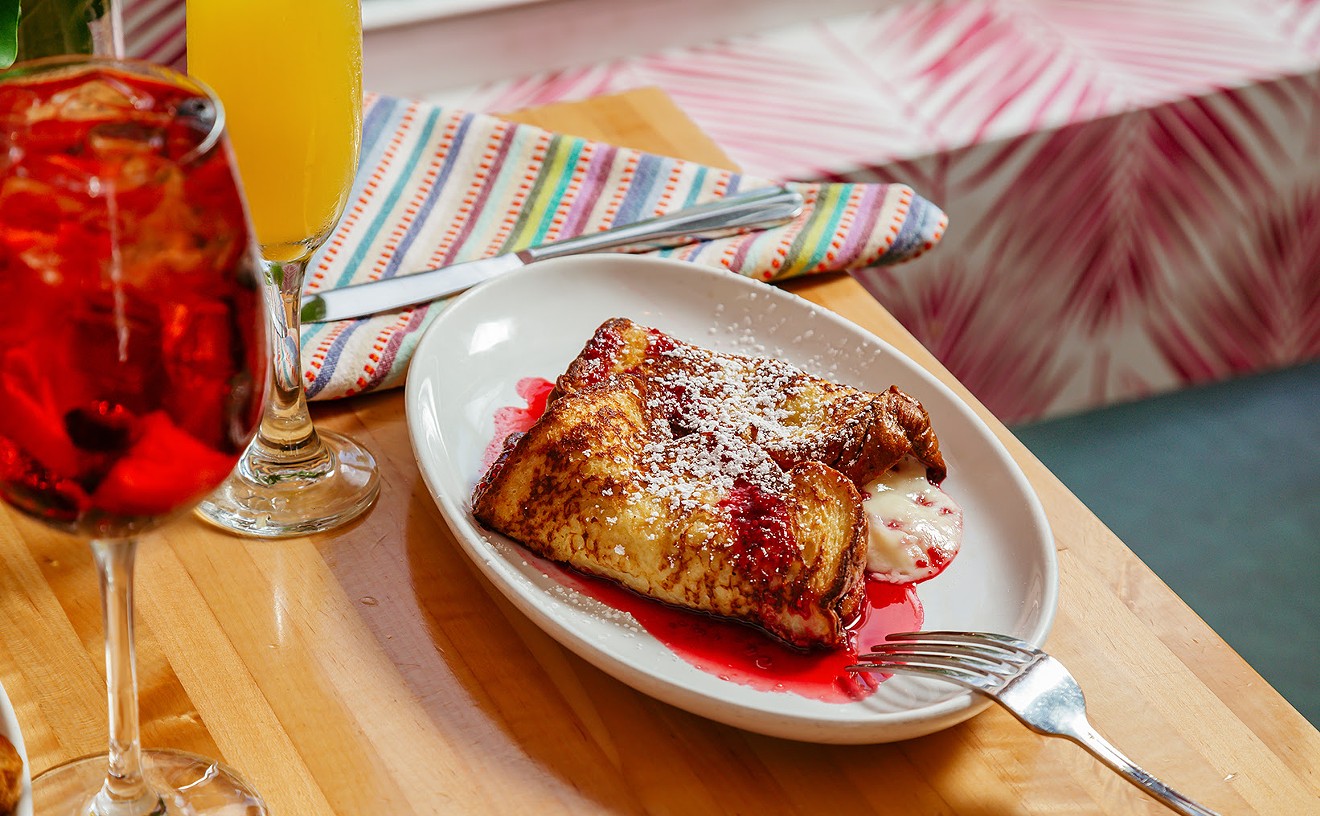Making sushi is an art, and Sushi Samba Coral Gables' sushi chef Shoyo Iida, paints a blank canvas with brilliant colors. Red, orange, white, and green all come alive in his vibrant preparations, which take him no longer than 45 seconds to roll. For newbies who recently made sushi during the monthly Sushi & Sake 101, it took a little longer than that. Blame it on all the sake tasting.
Short Order attended the $85, interactive, two-part lesson, which teaches how hot sake came about, why sake bombs are unacceptable, and how to make sushi rice.
Part one of the two-hour event takes attendees through a history of sake. The good news is there's food in between all the drinking so that no one gets completely hammered. It's hard to believe anyone learns anything at all.
But I learned plenty during the April 29 class. Take, for example, the fact that sake is made with rice that's different from sushi rice -- sake rice grains are significantly smaller. And though rice is a big deal in the sake-making process, it's not the most important of the four ingredients -- rice, water, koji, and yeast. That distinction goes to water. Northern Japan has the cleanest and smoothest water and thus produces the best sake. So next time you're out and want to act like a connoisseur of the popular rice beverage, ask for sake from the northern region of that country. Your date will be impressed.
Whatever you do, just don't order hot sake. This concept was created by Americans because the U.S. lacks premium rice and a good brewing program to make sake that's worth drinking. As a result, it's heated to mask imperfections. In Japan, hot sake is frowned upon, as are sake bombs -- another concept created by Americans. If you must order something hot, Sushi Samba's sake master encourages ordering a drink that isn't too aromatic. As far as the sake bombs, that's just a big no-no. Sake drinking is supposed to be a long and delicate process, enjoyed by slowly sipping and allowing all the notes of the complex beverage to reveal themselves.
Aside from temperature, there are two categories of premium sake: junmai shu and honjozo shu. While junmai is pure rice sake, honjozo is distilled using a very small amount of alcohol to bring out the flavors and aromas.
One too many sakes later, it was time to do some real work. Sushi chef Shoyo Iida introduced himself and gave a brief history of sushi while the rest of us munched on a plate of neo Tokyo sushi rolls (bigeye tuna, tempura flakes, aji panda). Additional nigiri and sashimi were also served. As I chewed on the fresh raw fish, I learned that sushi actually began as a form of preserving raw fish. The most interesting thing I learned, though, is that ginger is used to clean parasites from the fish, not to cleanse the palate, which is what I always thought.
Fish would be cleaned and then pressed between rice and salt by a heavy stone for several weeks. Months would pass before the fermented rice and fish were ready to eat. Things have obviously evolved. Still, rice is the single most important element in sushi. Once you have your sticky rice cooked and cooled, you need your seaweed. Place this with the shiny side down on the bamboo, and plop down a ball of rice and spread it out. Be careful not to press it down. Once your seaweed is covered in rice, simply choose your sushi roll fillings and position them accordingly.
Then comes the rolling -- the most important part. Grab the bamboo mat, roll it over, and press forward to create a cylinder. Then simply press firmly and remove.
As if this weren't enough food for $85, there's also dessert. A Samba split -- made with dulce le leche ice cream, caramelized bananas, coconut flan, dried pineapple, caramel popcorn, fresh berries, and Japanese whiskey whipped cream -- is a decadent ending to a very fresh meal.
Learn something new -- and eat something new -- every day.
Sushi & Sake 101's next installment takes place Tuesday, May 27, and costs $85 per person. Seats are limited to 25. Classes run through June and take place the last Tuesday of the month from 7 to 9 p.m.
Follow Carla on Twitter @ohcarlucha
Follow Short Order on Facebook, Twitter @Short_Order, and Instagram @ShortOrder.










